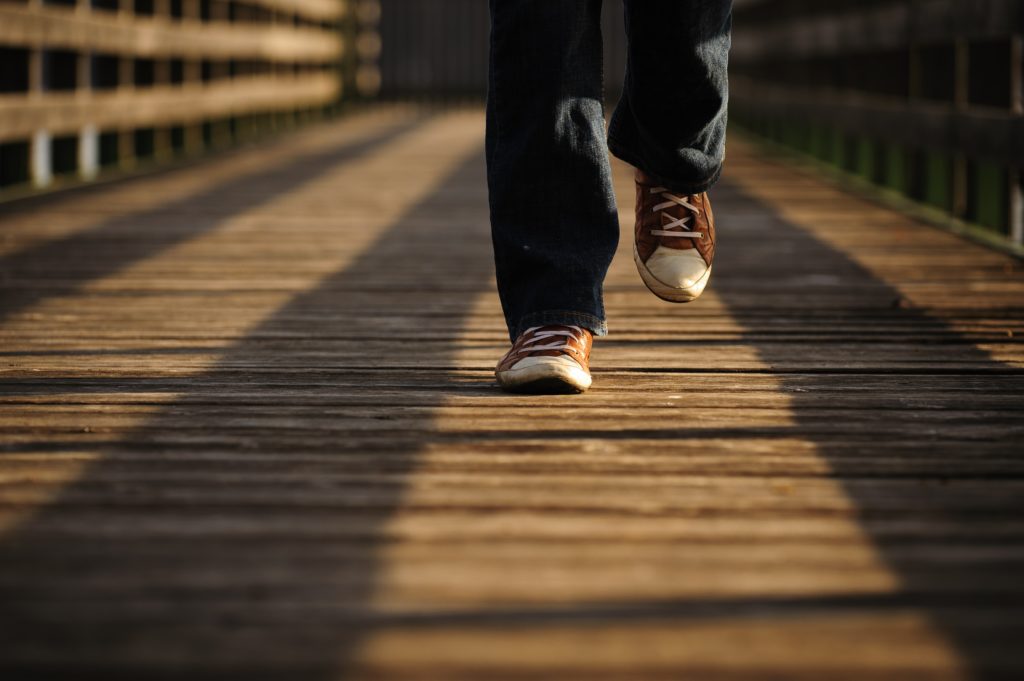
For most, walking can be the perfect pandemic activity. Walking is socially distanced, yet not isolated, while offering many health benefits.
Walking changes the world. Recently, when protesters demanding racial justice marched on Washington, they followed the footsteps of defiant walkers throughout history. From Mahatma Gandhi and the Indian independence movement to Martin Luther King, Jr., and the civil rights movement, walking and protest have been interrelated.
Walking is about more than walking, and always has been. Walking soothes. Walking inspires and sharpens the mind. The pandemic has taken away much... not only lives, livelihoods, but our need to feel free too. While there is much we can’t do, WE CAN WALK!
It might be said that with the right mindset, every walk is a pilgrimage. Many a breakthrough has been stumbled upon while putting one foot in front of the other. We run from problems. We walk toward solutions. While working on A Christmas Carol, Charles Dickens would walk 15 or 20 miles through the back streets of London, turning over the plot in his mind as the city slept. Beethoven found inspiration while ambling in the verdant Wienerwald outside Vienna.
Recent studies suggest that walking stimulates our creative mind is at its most creative at three miles per hour, the speed of a moderately paced stroll. Stanford University researchers divided participants into two groups: walkers and sitters. They then administered a test designed to measure creativity. They found that creative thinking was “consistently and significantly” higher for the walkers than the sitters. It didn’t take a lot of walking to boost creativity, either—anywhere from 5 to 16 minutes.
Studies have also shown that people who walk regularly are healthier and live longer than those who don’t. Surprisingly, you don’t have to walk very fast or far to enjoy this benefit. One recent study, published in JAMA Internal Medicine, put the 10,000-step myth to rest. It is an arbitrary number. People—older adults in particular—accrue health benefits by taking only a few thousand steps each day, and at a leisurely pace.
In addition to stimulating creativity and reducing stress, walking has many benefits. “There’s no question that increasing exercise, even moderately, reduces the risks of many diseases, including coronary heart disease, breast and colon cancer, and Type 2 diabetes,” said Dr. Jennifer Joyce, MD, professor of family medicine at GCSOM. “Research has even shown that you could gain two hours of life for each hour that you exercise regularly.”
According to the American Heart Association, walking as little as 30 minutes a day can provide the following benefits:
Like everything, there is a right way of doing something, even walking. For efficiency and safety, walking with proper stride is important. A fitness stride requires good posture and purposeful movements. Ideally, here's how you'll look when you're walking:
Anything is better than nothing! However, for most healthy adults, the Department of Health and Human Services recommends at least 150 minutes of moderate aerobic activity or 75 minutes of vigorous aerobic activity, or an equivalent combination of moderate and vigorous aerobic activity. The guidelines suggest that you spread out this exercise during the course of a week. Also aim to do strength training exercises of all major muscle groups at least two times a week.
As a general goal, aim for at least 30 minutes of physical activity a day. If you can't set aside that much time, try several short sessions of activity throughout the day. Even small amounts of physical activity are helpful, and accumulated activity throughout the day adds up to provide health benefits.
Remember it's OK to start slowly — especially if you haven't been exercising regularly. You might start with five minutes a day the first week, and then increase your time by five minutes each week until you reach at least 30 minutes.
For even more health benefits, aim for at least 60 minutes of physical activity most days of the week.
Keeping a record of how many steps you take, the distance you walk and how long it takes can help you see where you started from and serve as a source of inspiration. Record these numbers in a walking journal or log them in a spreadsheet or a physical activity app. Another option is to use an electronic device such as a pedometer or fitness tracker to calculate steps and distance.
Sources: National Geographic; Mayo Clinic
Visit your doctor regularly and listen to your body.
Keep moving, eat healthy foods, exercise regularly, and live long and well!

NEXT MONDAY – Read Dr. Paul J. Mackarey “Health & Exercise Forum!”
Read all of Dr. Mackarey's articles at: https://mackareyphysicaltherapy.com/forum/
This article is not intended as a substitute for medical treatment. If you have questions related to your medical condition, please contact your family physician. For further inquires related to this topic email: drpmackarey@msn.com
Paul J. Mackarey PT, DHSc, OCS is a Doctor in Health Sciences specializing in orthopaedic and sports physical therapy. Dr. Mackarey is in private practice and is an associate professor of clinical medicine at GCSOM.